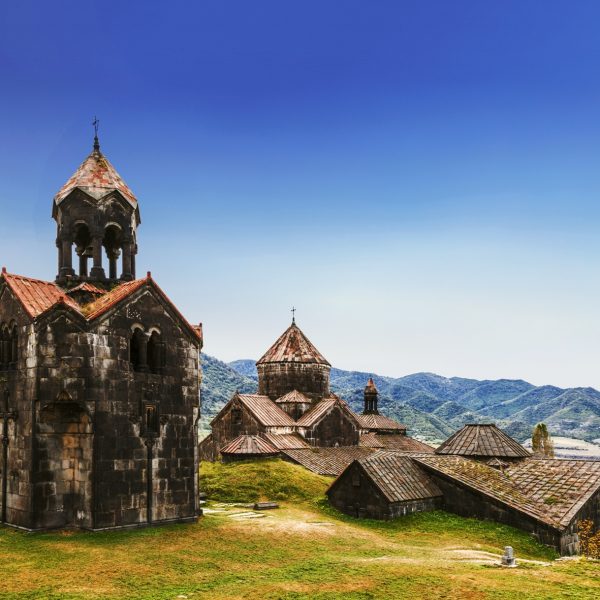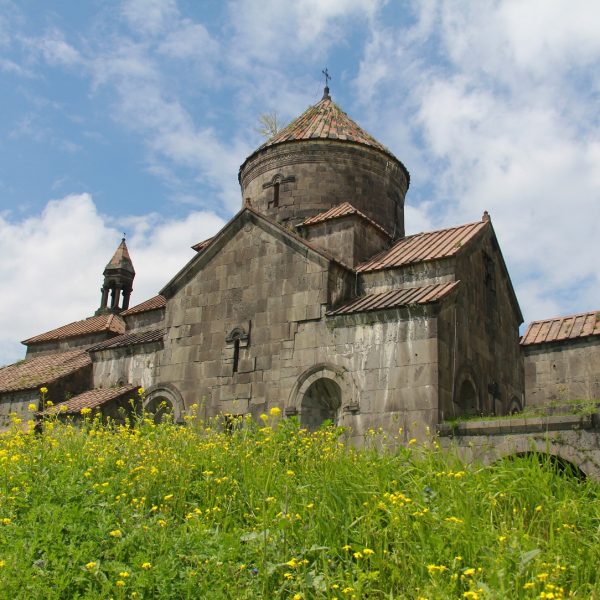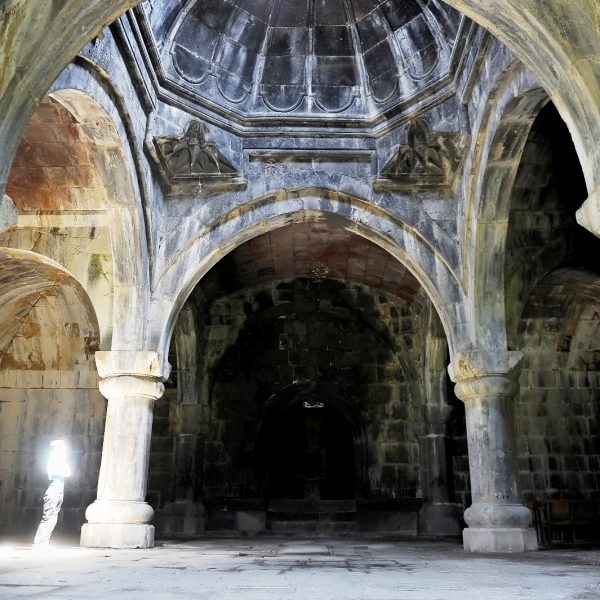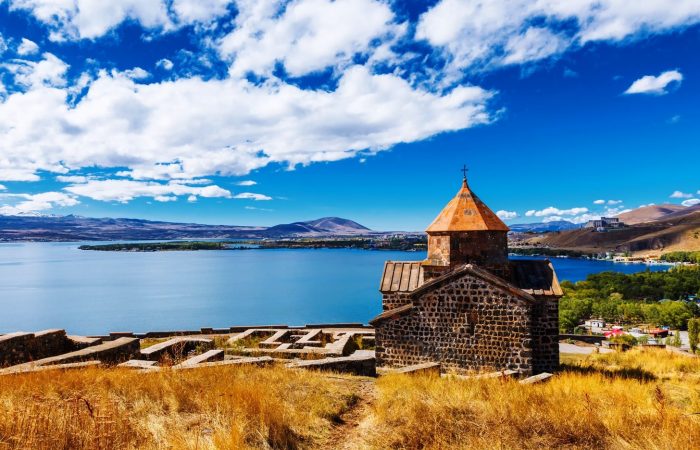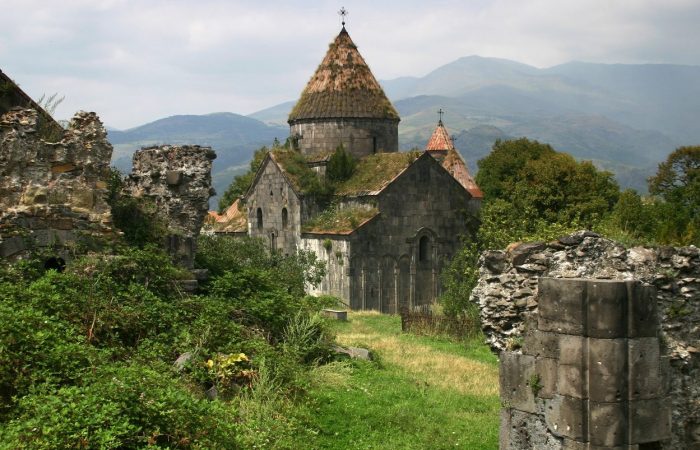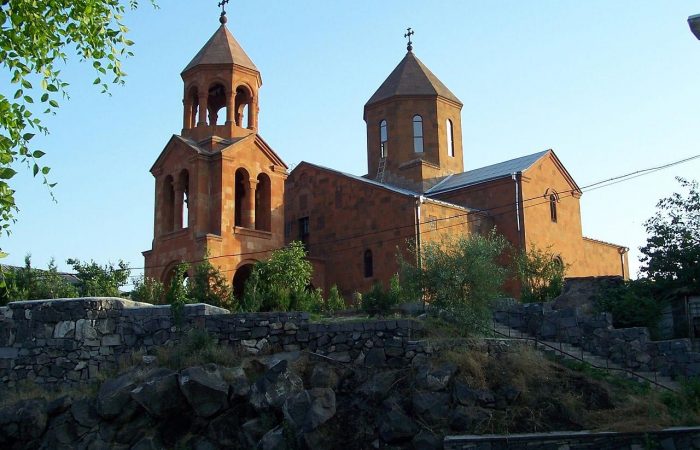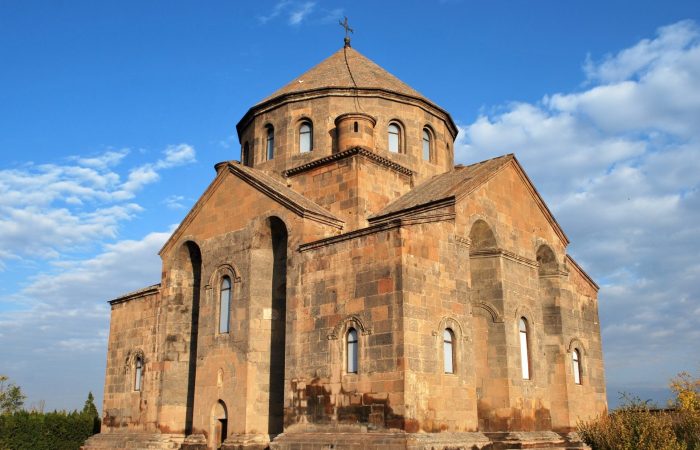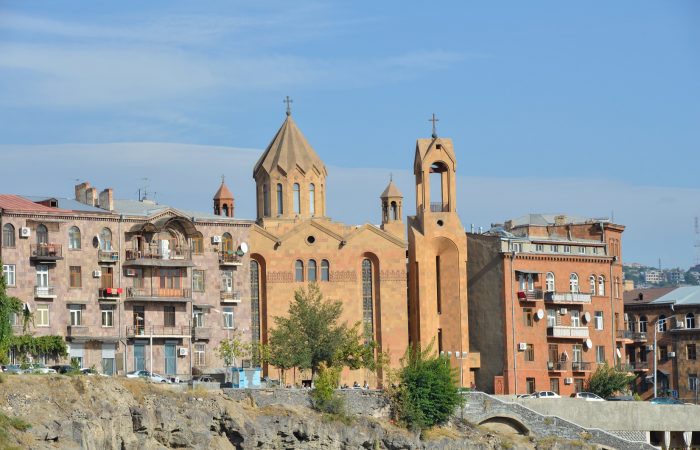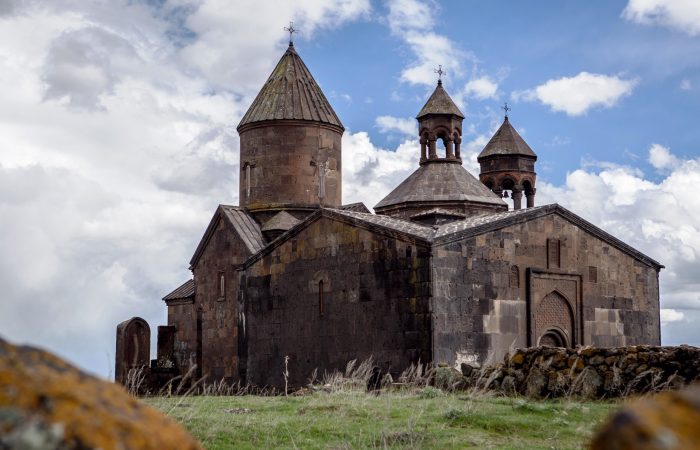Traveling through the Ages
Excavations held at Haghpat brought forth Bronze Age findings, while River Debed proves that those territories were inhabited still in the Old Stone Age. A church was erected in Haghpat in the fourth century. It is thought the monastery of Haghpat was built during the rule of Abas Bagratuni (929-953), though it should be noted that the construction of the monastery’s oldest building was launched in 976 and completed in 991 during the reign of Ashot III the Merciful. It was named Saint Nshan Church.
The monastery, however, went into decline in 1064, after the fall of Bagratuni dynasty. It started flourishing during the Zakaryans who were granted the monastery for the military service provided to the Orbelyan Kings in Georgia. Armenia was released from Seljuk domination at the end of the 12th century by Ivaneh and Zakareh Zakaryans. During their rule, the monastery was expanded occupying a territory three times larger than the previous one.
Already in the middle of the 13th century Haghpat became one of the largest religious and educational centers in Armenia.
Haghpat was Lori’s religious center from the 11th century and back then used to compete with its brother monastery of Sanahin. On the eve of Mongol attacks Haghpat’s bishop Hovhannes Matsnabertsi built the Fortress of Kayan, while his cousin Prince Shahnshah whose father was buried in Sanahin destroyed the fortress. The Mongols plundered both the monastery of Haghpat and the monastery of Sanahin.
Another crucial stage for the monastery started during the invasion of Lenk Timur’s legions (14th century), which was then followed by the wars between Ottoman Turkey and Safavid Persia (15th-17th centuries). Upon the treaty signed in 1639 Eastern Armenia was annexed to Persia. The established peace proved beneficial for the monastery, which was restored and re-maintained its role as a significant religious center. One very noteworthy thing to mention is that popular ashug (troubadour) Sayat-Nova (1722-1795) used to spend in the monastery rather long years of his life (he died as one of the defenders of the monastery).
Haghpat Monastery: Educational Center
Haghpat Monastery was not only a significant religious center but also a prominent educational center and a repository of manuscripts. Haghpat’s library was widely known.The monastery’s Father Superior was Hovhannes Sarkavag (Imastaser or Philosopher). During his life (1045-1129) Hovhannes Sarkavag came to be known for his reformations of the Armenian calendar as well as his studies in the sphere of theology, mathematics, medicine and natural sciences. He also gathered and edited over 50 spiritual manuscripts. Armenian historian Eritsyan discovered manuscripts, which probably belonged to Hovhannes Sarkavag’s library.
Haghpat Gospel
As one of the best miniature samples the Gospel of Haghpat was copied by scribe Hakob in 1211. It was the taken to Ani, where scribe and painter Margareh illustrated it. The gospel depicts secular life, daily scenes and historical figures. The only preserved narrative in the Gospel is Jesus Christ’s Entry into Jerusalem, in which Jesus is depicted on the back of a donkey and among them there are Armenians wearing taraz (traditional Armenian dresses/clothes). The script was then again taken to Ani, more precisely to the monastery of Horomos. And after long travels, the Gospel reached Saint Ejmiatsin in 1920 (before that it remained for around 8 centuries in Artsakh).
Presently, the Gospel is kept in Matenadaran.
Haghpat Monastery: Jgrashen Church (Chapel of Saint Astvatsatsin/Holy Mother)
Jgrashen Church, which actually is a chapel, was built in 1195 and can be found outside of the monastery walls. Jgrashen means “built out of rage.” A legend has it the chapel was built by one of Sanahin monastery students studying architecture there. It is said that he built the monastery out of rage. The chapel has beautiful khatchkars on its western façade.
Haghpat Monastery: Saint Grigor Church
As you enter the monastery the first church that appears on the way or in front is Saint Grigor Church built in 1023-1025. From the inside the monastery appears to have a cross-like form, while from the outside it is a rectangular building. The currently bare walls were once decorated with frescoes. Saint Grigor church was renovated in 1211. The outer walls were decorated with columns and pointed arches.
Haghpat Monastery: Saint Nshan Church
The oldest and main church among Haghpat monastery churches Saint Nshan church was built upon the order of Queen Khosrovanuysh in 976-991 in the honor of her sons Gurgen (Kyurike) and Smbat. The monastery of Sanahin was as well built upon the Queen’s initiative. Later on Kyurikyans acted as the primary sponsors of Sanahin and Haghpat monasteries. Saint Nshan Church is a rectangular building from outside and has a cross-form from inside with a wide dome, which was renovated in 1113. The church is believed to be built by prominent Armenian architect Trdat who was later invited to Constantinople to repair the dome of Hagia Sophia Church.
Inside the church there are stone steps that take to a balcony meant for the members of the Kyurikyan family; it’s from where they used to hear the Mass. The church’s main altar and walls included frescoes out of which only several have been preserved. There is also a bas relief sculpture, which depicts Smbat and Gurgen standing opposite each other holding the church’s model. Later on Smbat became King Smbat II Bagratuni (Smbat the Conqueror, 977-989) and Gurgen founded the royal dynasty of Kyurikyans in Lori.
Haghpat Monastery: Saint Nshan Gavit
Built in 1208-1209 by Abbot Hovhannes of Khachen in the place of an earlier building the Gavit of Saint Nshan is one of the exclusive achievements of medieval Armenian architecture. Back in 1185 there used to be the mausoleum of the Kyurikyan family. The mausoleum was built by Princess Mariam, and was therefore known as Mariamashen (built by Mariam). The floor is all covered with the gravestones of princely figures. Compared with other gavits typical of those times, the Gavit of Saint Nshan is larger and stands out with crossing arches. The use of those arches seems to enlarge the gavit’s area and stretch up the inner halls.
Haghpat Monastery: Saint Atsvatsatsin Church
Saint Atsvatsatsin Church was built in 1208-1220 upon the order of the daughter of Prince Hassan. The daughter’s name was Khatun and in this respect, the church is also known as Khatunashen (built by Khatun). Saint Atsvatsatsin is a small and dome-type church with a rectangular form from the outside and a cross-like appearance form the inside.
Haghpat Monastery: Hamazasp Chapel
To the north of Saint Nshan Church a gavit built in 1257 by Father Superior Hamazasp can be found. The gavit is more known as the building of Hamazasp or Hamazasp’s chapel. Being the largest gavit in Armenia (around 330 square meters) it has a low building with the eastern part of roof buried in the soil. The vestibule is amazing and up to this day is in the center of attention of many people studying architecture. It is explained by the fact that the chapel-gavit faced attacks and earthquakes, yet it was only slightly damaged.
Haghpat Monastery: Medieval Fortified Walls
The fortified walls date to the 10th-11th centuries, more precisely they were built after the construction of Saint Nshan Church was completed. During the 13th-16th century invasions the walls were rebuilt for many times. Gigantic stones were used. The walls were last repaired in the 20th century.
Haghpat Monastery: Repository
Adjacent to the northern wall of Saint Nshan Church a repository was built in the 11th century. It’s where the ancient and valuable manuscripts of Haghpat were kept. In the 11th-13th centuries the abbots of Haghpat spared no effort to have all the Armenian books and manuscripts, and in this regard, Haghpat’s repository turned into the first Armenian Matenadaran (repository of manuscripts). The abbots were looking for manuscripts in the entire territory of Armenia. They also copied the manuscripts, which they couldn’t take with then to the monastery.
Out of safety measures the manuscripts were later moved to the nearby caves, which used to serve as reading halls as well. A legend has it that in the 13th century Mongols used to torture abbots to learn the place of the manuscripts. It is also said that with the hope to find strength to stand the pain three senior and twelve junior clergymen uttered the following phrase from the Gospel, “Do not give dogs what is sacred; do not throw your pearls to pigs.”
Of interest are the half-buried jars in which wine and dairy products were being kept.
Haghpat Monastery: Belfry
The belfry of Haghpat Monastery was built in 1245 upon the order of Father Superior Hamazasp. It’s a three-story building with seven prayer halls on the first and second floors. The third floor comes as rotunda with seven columns that hold the arches covered with a pointed roof.
Other things to see in Haghpat Monastery are the Sayat-Nova Memorial and the refectory. Outside of the monastery, in Haghpat village the ruins of a fourth century church can be seen. The fourth century church is considered Haghpat’s first Christian church, so it’s also worth a visit.

